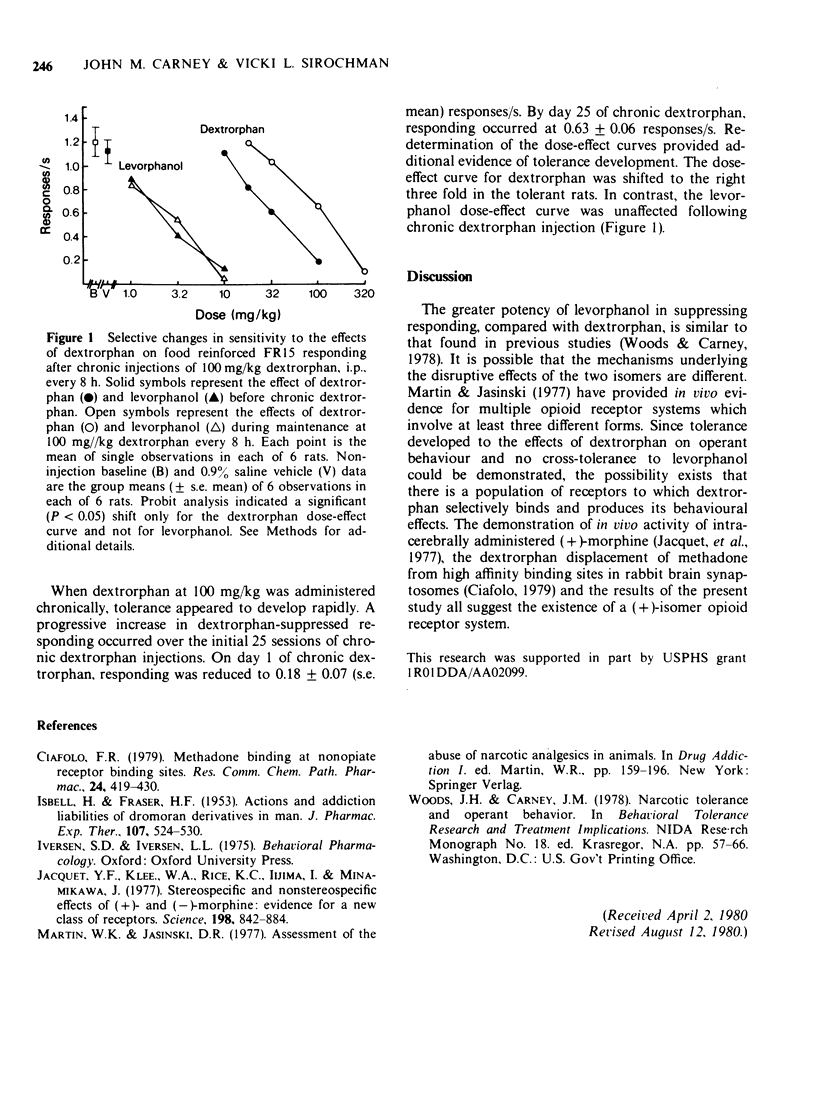Abstract
1 Levorphanol was 20 times more potent than dextrorphan in decreasing food-reinforced fixed ratio 15 responding in male Sprague Dawley rats. 2 Chronic dextrorphan (100 mg/kg, i.p.; every 8 h) resulted in the development of dextrorphan tolerance. The dextrorphan dose-effect curve was shifted to the right three fold. 3 In contrast to dextrorphan, nontolerance developed to the effects of levorphanol. 4 These data support the hypothesis that (+)-isomers of opioids produce pharmacologically distinct CNS effects.
Full text
PDF

Selected References
These references are in PubMed. This may not be the complete list of references from this article.
- ISBELL H., FRASER H. F. Actions and addiction liabilities of dromoran derivatives in man. J Pharmacol Exp Ther. 1953 Apr;107(4):524–530. [PubMed] [Google Scholar]
- Jacquet Y. F., Klee W. A., Rice K. C., Iijima I., Minamikawa J. Stereospecific and nonstereospecific effects of (+)- and (-)-morphine: evidence for a new class of receptors? Science. 1977 Nov 25;198(4319):842–845. doi: 10.1126/science.199942. [DOI] [PubMed] [Google Scholar]


